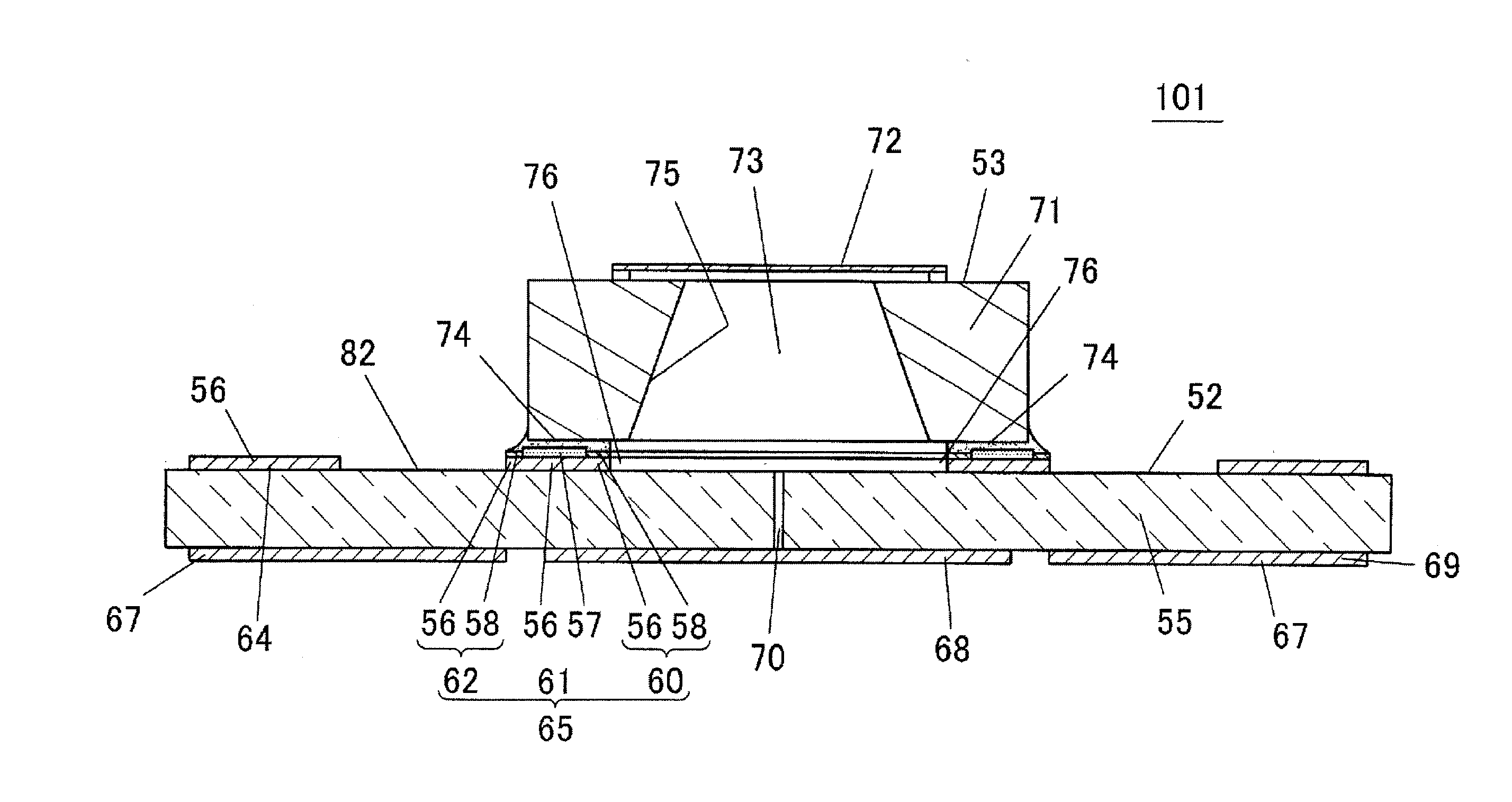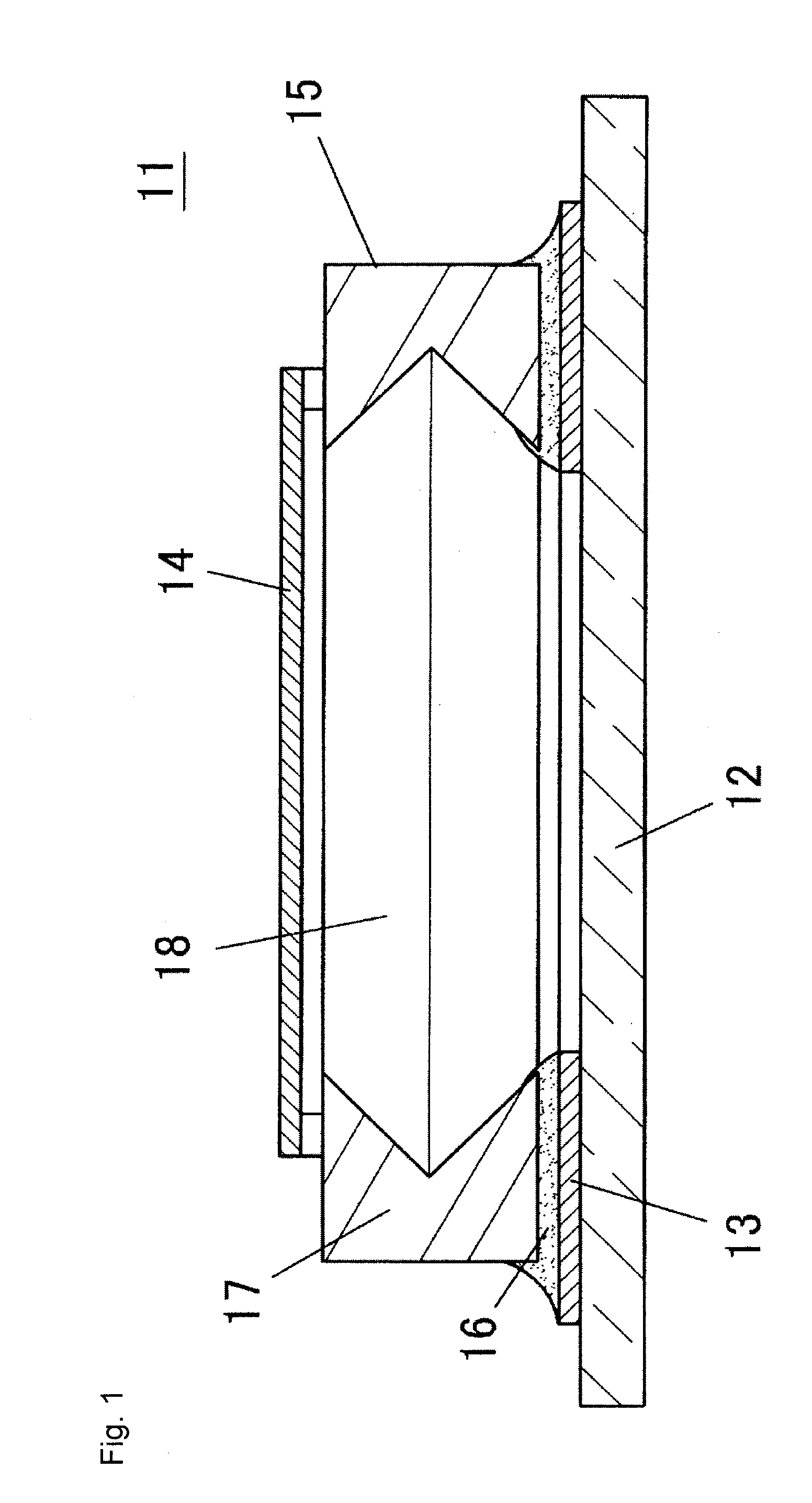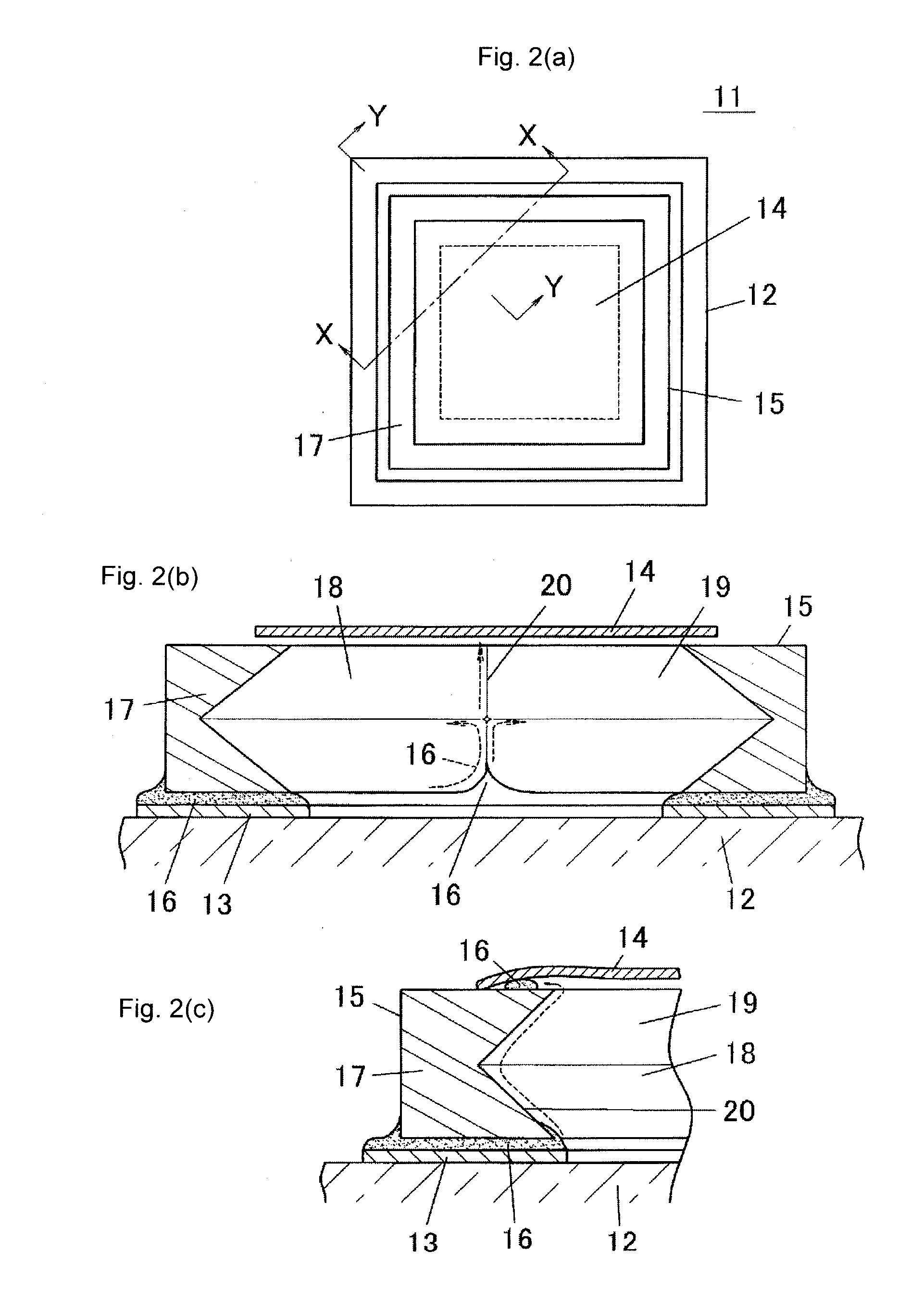Semiconductor device
a technology of semiconductor elements and devices, applied in the direction of microstructural device assemblies, electrical transducers, electrostatic transducers of semiconductors, etc., can solve the problems of inapplicability of methods, and achieve the effects of enhancing the adhesion strength of semiconductor elements, enhancing the buffering effect of die bonding resin, and increasing the adhesion area of semiconductor elements
- Summary
- Abstract
- Description
- Claims
- Application Information
AI Technical Summary
Benefits of technology
Problems solved by technology
Method used
Image
Examples
first embodiment
[0031]FIG. 4 is a cross-sectional view showing a structure of a semiconductor device 51 according to a first embodiment of the present invention, and shows the cross-section in the diagonal direction of a substrate 52. FIG. 5 is a plan view of the substrate 52 used in the semiconductor device 51, and also shows one part thereof in an enlarged manner. The semiconductor device 51 shown here has a semiconductor element 53 mounted on an upper surface of the substrate 52, and the semiconductor element 53 accommodated in a package (Faraday cage) including the substrate 52 and a conductive cap 54.
[0032]The substrate 52 is configured by a printed board, where a conductor pattern 56 (metal foil) of copper foil, and the like is stacked on substantially the entire surface of the upper surface of a substrate core material 55 (prepreg), as shown in FIG. 4. A conductor pattern 69 (metal foil) of Cu and the like is also stacked on substantially the entire surface of the lower surface of the substr...
second embodiment
Variant of Second Embodiment
[0058]FIG. 8 is a cross-sectional view showing a structure of a variant of the second embodiment, and shows a state before attaching the conductive cap 54. In the variant, the substrate core material 55 is omitted at the bottom surface of the opening 76 to arrange an excavated portion 83. Since the excavated portion 83 is formed in the opening 76, the depth of the opening 76 becomes deeper and the die bonding resin 74 is less likely to touch the lower end of the valley section 75 in the unlikely event the die bonding resin 74 flows into the opening 76, whereby the possibility the die bonding resin 74 runs up along the valley section 75 becomes smaller.
[0059]The deepening of the opening 76 can be applied to embodiments other than the second embodiment.
third embodiment
[0060]FIG. 9 is a cross-sectional view showing a structure of a semiconductor device 91 according to a third embodiment of the present invention, and shows a state before attaching the conductive cap 54. FIG. 10 is a plan view of the substrate 52 used in the semiconductor device 91, and also shows one part thereof in an enlarged manner. In the third embodiment, the outer peripheral side plated region 62 in the second embodiment is removed to enlarge the groove portion 82, and the outer peripheral end of the second solder resist region 61 is substantially coincided with the outer peripheral end of the lower surface of the semiconductor element 53. According to such embodiment, the die bonding resin 74 that flowed out to the outer side is less likely to flow to the ground electrode portion 64 since the groove portion 82 can be widened.
PUM
 Login to View More
Login to View More Abstract
Description
Claims
Application Information
 Login to View More
Login to View More - R&D
- Intellectual Property
- Life Sciences
- Materials
- Tech Scout
- Unparalleled Data Quality
- Higher Quality Content
- 60% Fewer Hallucinations
Browse by: Latest US Patents, China's latest patents, Technical Efficacy Thesaurus, Application Domain, Technology Topic, Popular Technical Reports.
© 2025 PatSnap. All rights reserved.Legal|Privacy policy|Modern Slavery Act Transparency Statement|Sitemap|About US| Contact US: help@patsnap.com



